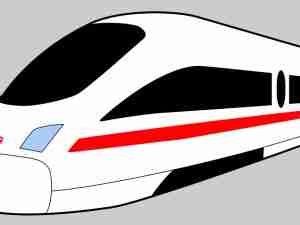India aims to invest $137 billion in railways in next 5 years
By: Reuters | Feb 26 2015 at 03:22 PM | Intermodal
India's government unveiled plans to invest $137 billion in its decrepit rail network over the next five years, heralding Prime Minister Narendra Modi's aggressive approach to building infrastructure needed to unlock faster economic growth.
Over the next year, India will increase investment by about a half to 1 trillion rupees ($16.15 billion) including funds raised by market borrowing.
To meet the five year target, investment will have to speed up even more after that, leaving economists questioning where the money would come from as the government has to rein in its fiscal deficit.
Presenting the rail budget two days before India's federal budget - also expected to hike infrastructure spending - Railway Minister Suresh Prabhu shied away from hiking passenger fares to finance the upgrades, but raised freight rates.
He said the budget "set the direction of a long and difficult road of reform."
Modi, who called the rail budget "a paradigm shift" is expected to use Saturday's federal budget to lay out an economic vision focused on building the roads, power and technology needed to make India a leading global economy.
Prabhu, one of Modi's trusted economic aides, said he would raise funds from multi-lateral lenders, infrastructure and pension funds, as well as "monetizing" railway assets. He said the railway would not be privatized.
"Over the next five years, the railways have to undergo a transformation," Prabhu said in a speech that was short on details.
While India has the world's fourth largest rail network, it has been outstripped by China, which now has more than six times as much track following an intensive expansion and modernisation of its network over the past two decades.
Question of Funding
Providing jobs for 1.3 million people, the railway is India's largest single employer, and reform is politically sensitive. Successive governments have shied away from modernization, preferring instead to use the system to provide cheap transport and create jobs.
Economists welcomed the minister's decision to break with a populist budget tradition of announcing dozens on new trains for politically sensitive region, but said they would like to see more explanation of how the investment will be funded.
"I am little doubtful about the ways the railway minister will finance the huge capital expenditure as the budget lacks the specific detail, said Jyotinder Kaur, principle economist at HDFC Bank, New Delhi.
The rail budget, a relic of Indian's British colonial past, said the share of rail revenue available for investments would rise to 11.5 percent in the fiscal year starting on April 1, up from 8.2 percent in the current fiscal year.
Excluding market borrowing, the amount projected for investment in 2015/16 is up by 31 percent, signaling an increased commitment to infrastructure from federal funds.
State-run Indian Railways has more funds available thanks to a sharp drop in the price of diesel fuel that powers most Indian locomotives.
The finance ministry increased federal funding for the railway to 400 billion Indian rupees ($6.47 billion) from 301 billion Indian rupees ($4.87 billion) budgeted in 2014/15.
The BSE share index reacted negatively to the speech, sinking 0.7 percent, with wagon makers Titagarh Wagons down 2.6 percent, while Texmaco Rail & Engineering lower 7 percent.
Passenger fares are subsidised by freight revenues that are high compared to other countries. Prabhu raised rates further, with a 6.3 percent hike for coal transport. He said he planned to raise the amount of freight carried to 1.5 billion tonnes a year, from 1 billion tonnes at the moment.
The minister said spending would be focused on improving and expanding existing railway lines, many of which are operating at more than full capacity, with the average speed of the country's best trains a sluggish 70 km (44 miles) per hour.
Accidents are common and trains, platforms and toilets on the network are often filthy. (Reuters)







